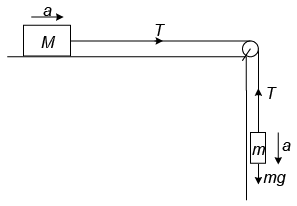Integer Answer Type Questions for JEE: Units & Measurement | Chapter-wise Tests for JEE Main & Advanced PDF Download
Q.1. The 10th term from the end in the AP 5, 8, 11, …… is 95 then the number of terms in the AP are
Ans. 40
If the number of terms in the A.P. are n, then 10th term from the end will be (n - 9)th term from starting.
∴ 5 + (n - 10) x 3 = 95 ⇒ n = 40
Q.2. sin 20° sin 70 ° - cos 20 ° cos 70° =
Ans. 0
sin 20° sin 70° - cos 20° cos 70° = - cos(70° + 20°) = 0
Q.3. If  and
and  find the angle between
find the angle between  and
and 
Ans. 25
We have
or,where, θ is the angle between
and
Now,= axbx + ayby + azbz
= 2 x 4 + 3 x 3 + 4 x 2 = 25
Q.4. If  and
and  find
find
Ans. 0
Q.5. Two full turns of the circular scale of a screw gauge cover a distance of 1 mm on its main scale. The total number of divisions on circular scale is 50. Further, it is found that screw gauge has a zero error of – 0.03 mm. While measuring the diameter of a thin wire, a student notes the main scale reading of 3 mm and the number of circular scale divisions in line with the main scale as 35. The diameter of the wire is
Ans. 3.38
Least count = 0.5mm/50 = 0.01mm
Zero error = – 0.03 mm (Given)
Measured diameter = 3 mm + 35 × 0.01 mm = 3.35 mm
Correct diameter = 3.35 – (–0.03 mm) = 3.38 mm
Q.6. A body of mass m = 3.513 kg is moving along the x-axis with a speed of 5.00 ms–1. The magnitude of momentum is recorded as
Ans. 17.6
p = mv = 3.513 × 5.00 = 17.565 kg ms–1
Since, the result cannot have more than three significant figures
p = 17.6 kg ms–1
Q.7. The heat dissipated in a resistance can be obtained by the measurement of resistance, the current and time. If the maximum error in the measurement of these quantities is 1%, 2% and 1% respectively, what is the maximum error in determination of the dissipated heat?
Ans. 6%
Heat produced H is given by
For maximum percentage error,
= 2 × 2% + 1% + 1% + 0% = 6%
Q.8. The coefficient of static friction between a block of mass m and an incline is ms = 0.3. What can be the maximum angle q of the incline with the horizontal so that the block does not slip on the plane?
Ans. 16.7°
Angle of repose θ = tan-1(μ)
∴ θ = tan-1(0.3) = 16.7°
Q.9. The coefficient of static friction between a block of mass m and an incline is μs = 0.3. If the incline makes an angle of θ/2 with the horizontal, find the frictional force on the block.
Ans. 0.296 mg
Frictional force = μsmg cos (θ/2)
∴ ffr = 0.3 x cos (16.7/2)° mg = 0.296 mg
Q.10. A mass of 2 kg hangs freely at the end of a string, which passes over a smooth pulley fixed at the edge of a smooth table. The other end of the string is attached to a mass M on the table. If the mass on the table is doubled the tension in the string increases by one-half. Find the mass M.
Ans. 1 kg
The tension in the string is given by
In the second case M changes to 2M and T changes to 3/2 T
Dividing (i) by (ii), we get
Substituting m = 2 kg, then
M = 1 kg
|
446 docs|930 tests
|

|
Explore Courses for JEE exam
|

|


 = axbx + ayby + azbz
= axbx + ayby + azbz























